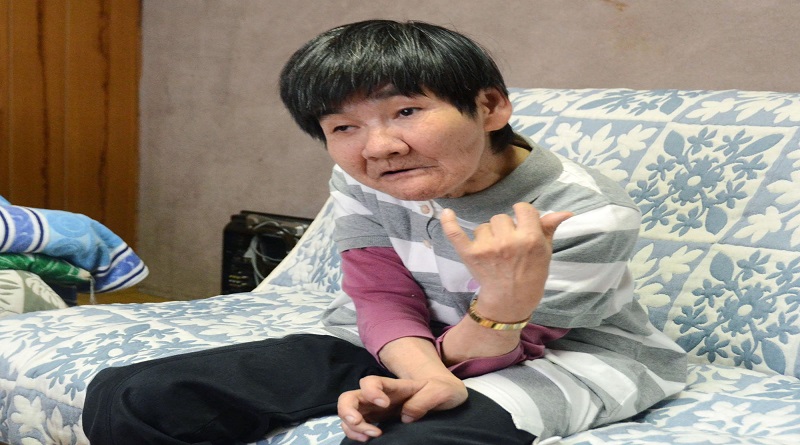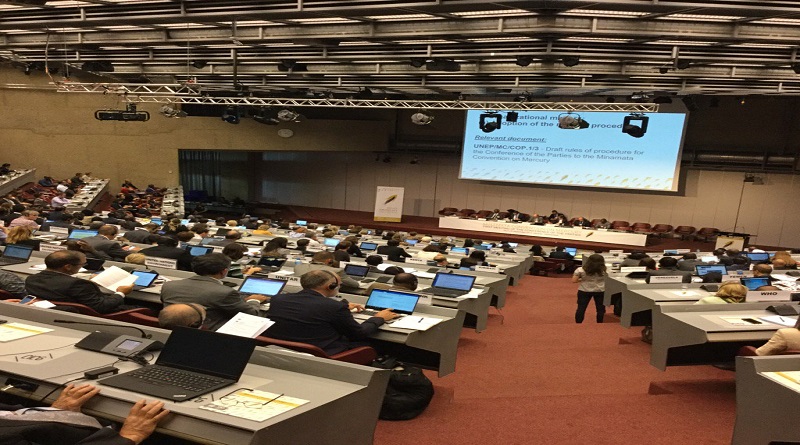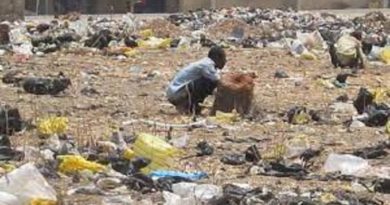Mercury: Minamata Convention kicks-off as disease survivors narrate ordeal
The long awaited first Conference of the Parties (COP 1) to the Minamata Convention on Mercury kicked-off in Geneva, Switzerland on Sunday September 24, 2017 where over 130 nations gathered in a weeklong conference to address the global challenge of mercury pollution to human health and the environment.
The maiden conference coming four years after the Plenipotentiary Conference on Minamata Convention was held in Minamata in 2013 and the convention entry into force August this year bring together governments, non-governmental organisations
In an emotion filled atmosphere, patients of Minamata disease particularly from Minamata city who are participating in the conference shared their ordeal and what they have suffered as a result of the epidemic to show the seriousness and why the world need to act fast on the challenge.
To Ms. Kiyoko Kagata, a fetal Minamata disease patient, “There are many more bed-ridden Minamata disease patients in Minamata. I cannot walk any more. I am so afraid of going outside with my wheelchair because of staircases. Minamata disease is not over yet. I don’t want mercury or other dangerous chemicals to be put into the environment anymore.”
Mr. Kenji Nagamoto, another fetal Minamata disease patient, says “There are Minamata disease patients whose conditions have worsened. However, there are people who use mercury to make money. I want all the people in the world to think about the people who have suffered because of mercury.”
To Ms. Fujie Sakamoto, Certified Minamata disease patient, mother of Shinobu Sakamoto. “If there is no need of using mercury, then we should try not to use it. Safe treatment is necessary.
“It is too late to deal with pollution after it occurred. It is really too late when some people were damaged. There have been no Minamata disease patients who had recovered. The most important is not to cause any pollution.
“Pollution causes the damage which threats more than some ten thousands of people.
“The government should take quick actions before they hear the claim from the patients or people who were damaged. The governments are the ones to take measures seriously. Minamata disease is not over yet.”
Mercury is a neurotoxin with a global reach. The heavy metal is released into the environment as a result of a number of human activities. In the environment, it enters the food chain, accumulates in the body and can harm the brain, heart, kidneys, lungs and immune system of people of all ages. Mercury is particularly harmful to unborn children and infants whose nervous systems are under development. Damage to the brain cannot be reversed. There is no known safe exposure level for elemental mercury in humans, and effects can be seen even at very low levels.
The Parties to the Minamata Convention on Mercury, which entered in to force on 16 August 2017, will now begin to implement the new global treaty which includes banning new mercury mines and phasing-out existing ones; regulating the use of mercury in artisanal and small-scale gold mining, certain industrial processes and the production of everyday items such as certain Compact fluorescent lamps, batteries and teeth fillings; as well as controlling the emissions of mercury as a by-product from a range of industrial sectors – including coal burning.
In his opening address at the Conference, Deputy Executive Director, United Nations Environment Programme (UNEP), Mr. Ibrahim Thiaw, said the inaugural COP 1 is a chance to work towards: The safe handling, storage, treatment and disposal of mercury products and wastes; the end of mercury production and use, especially in mining and industry; the creation of clean, coal-free energy; the adoption of mercury free thermometers, blood pressure monitors and amalgam; the strengthening of judicial frameworks to hold people responsible for their action and ensure citizens have free access to the information and legal protection they need and better understanding the impact of exposure to mercury waste for the most vulnerable in society, particularly women and children.
Thiaw noted that the World Health Organisation rates mercury as one of the top 10 chemicals or group of chemicals of major health concern. Yet, exposure is not limited to one or two areas; to a few loopholes in protection.
“Studies show that children as far afield as Brazil, Canada, China, Columbia and Greenland all suffer cognitive impairment from eating fish containing mercury.
“Today, it affects daily life for them and their families. In the future, it will have a longer term social and economic impact on their communities and their countries. That’s why the Minamata Convention is such an important milestone.
“Not only because it is the first such global environmental health agreement in nearly a decade but because it is an essential building block for the 2030 Agenda for Sustainable Development,” he stressed.
Thousands of tonnes of mercury are emitted each year through releases to air, land and water. Mercury may be released naturally through the weathering of mercury-containing rocks, forest fires and volcanic eruptions. However, the most significant emissions come from human activities, particularly coal burning and artisanal and small-scale gold mining. Mining alone exposes up to 15 million workers and their families in over 70 countries to being poisoned by mercury, and this includes child labourers.
Like other heavy metals, mercury persists in the environment and builds up in human and animal tissues. Exposure to mercury occurs mainly through ingestion of fish and other marine species contaminated with methylmercury, its most toxic and bioaccumulative form. People are also exposed to elemental or inorganic mercury through inhalation of mercury vapour during occupational activities or spills or through direct contact from mercury use.
Mercury pollution is a global problem as it vaporizes and can therefore be transported through the air over long distances far removed from its original emission source, polluting air, water and soil. As mercury is an element it is indestructible, and the Convention therefore also stipulates conditions for its interim storage and sound disposal once it becomes waste.
So far, out of the 128 countries that signed the Convention, 81 countries have ratified it as at Monday September 25, 2017 with the recent ratification on Thursday and Friday September 21 and 22 by Lao People’s Democratic Republic, Luxembourg, Mauritius, Indonesia and Singapore.
Kayode Aboyeji




